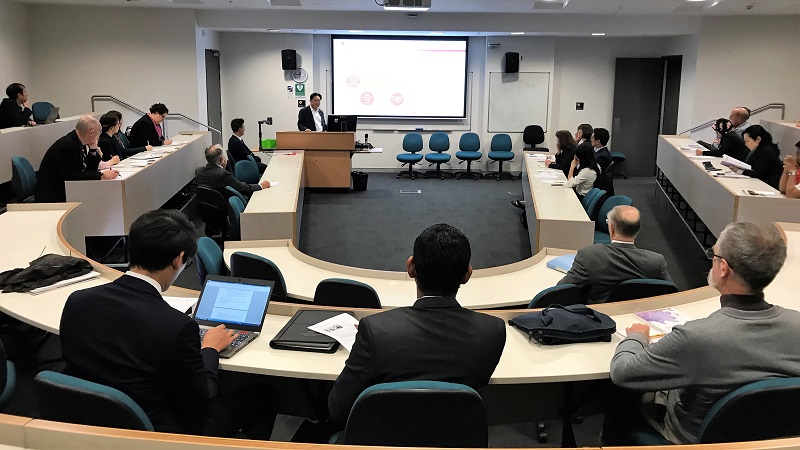
AMRO Chief Economist Dr Hoe Ee Khor presents on East Asia’s economic outlook and risks to an audience of 30 government officials, professors, and students at the Australian National University in Canberra.
Strengthening regional financial safety nets and ensuring a smooth transition into the new economy are pertinent to the economic stability and well-being of the ASEAN+3 region. This was highlighted across all three outreach events the ASEAN+3 Macroeconomic Research Office (AMRO) held in Australia.
Following the launch of the newly published ASEAN+3 Regional Economic Outlook (AREO) 2019 in Fiji, AMRO made a stop in Australia in early May to reach out to policymakers and the local academic community to exchange views on key issues examined in the report.
In collaboration with the Lowy Institute of Public Policy in Sydney and the Asian Bureau of Economic Research at the Australian National University in Canberra, AMRO participated in two roundtables and a public lecture, when AMRO Chief Economist Dr. Hoe Ee Khor presented on the outlook and challenges of East Asian economies. He also addressed how the region can embrace technology and develop the services sector to successfully transition into the new economy.
In his presentation, East Asia’s Economic Outlook: Opportunities and Challenges, Dr. Khor emphasized that despite external headwinds, the region remains resilient and is expected to grow at around 5.1 percent in 2019-2020. He highlighted the impact that global risk factors, notably the escalating US-China trade tensions, would have on regional economic growth, and urged policymakers in the region to calibrate their policies to mitigate economic headwinds.
Dr. Khor also spoke about the need for regional economies to invest in hard and soft infrastructure to capitalize on the digital technology and rising middle class as a new source of growth. While the manufacturing sector is still an important sector, it is becoming less labor intensive, given the shift to the 4th Industrial Revolution, such as automation, robotics, and artificial intelligence. In Thailand for example, the large auto industry could potentially see more robotics taking over manual jobs. However, the services industry has emerged as a new driver of growth which can provide the needed impetus for income convergence. In the Philippines, business process outsourcing is a high-end service industry, which employs mostly college graduates whereas tourism is a booming industry in several countries in the region.
The panel also argued for technology to be better harnessed to drive growth in the region. Although new services such as e-commerce, e-payment, and ride-sharing have taken off well in the region, the region needs better connectivity and a review of the regulatory framework to ensure seamless flow of data and services.
To this end, the region can look to intraregional investments and tap on regional initiatives to develop better infrastructure and connectivity.
Participants also concluded that the region needed a well-coordinated and robust regional financial safety net centered on the Chiang Mai Initiative Multilateralism with support from AMRO.
Discussants were of the view that Australia should be more engaged in Asia through enhanced participation in international fora such as the Group of 20 and the Asia-Pacific Economic Cooperation (APEC).
